Latest Posts
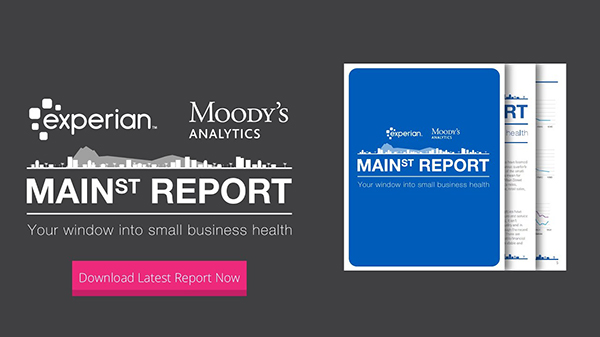
Experian Business Information Services and Moody’s Analytics have joined forces to develop the Experian/Moody’s Analytics Main Street Report. The report leverages a combination of business credit data (including credit balances, delinquency rates and utilization rates) and macroeconomic data (including employment rates, income, retail sales and investments) to provide a more accurate assessment of the health of small businesses. Small businesses are the engine of the U.S. economy - employing the majority of U.S. workers, so with this quarterly report Experian seeks to provide a unique view into the health of those small businesses, offering a benchmark on their overall financial health, and emerging trends across major industry sectors. “Gaining deeper insight into the health of small businesses is important for credit-granting organizations, as well as the small-business owner. While credit grantors can leverage the information to make more profitable financial decisions, small-business owners can better understand the fluctuations in their industry and region. By working with Moody’s Analytics, we are able to combine our expertise and data resources to deliver a more holistic view of the trends impacting the business community in particular and the economy overall.” Gavin Harding, Sr. Business Consultant Experian, Global Consulting Practice Q1 2016 highlights The first quarter 2016 report shows that credit conditions for small businesses have remained relatively stable, as delinquency and bankruptcy rates hold steady at low levels. In fact, much of the slight decrease in delinquencies was driven by fewer small businesses falling within the 61 to 90 and 91+ days past due categories. Additionally, the Q1 2016 report shows that small businesses have begun to expand their credit lines while keeping their utilization rates down. Through a combination of the increase in credit availability and small gains in balances, the average credit utilization for a small business dropped nearly 17 percent from the previous year. “Small business credit conditions continue to improve, and near-term prospects are good. Delinquencies and bankruptcies have declined in most industries and regions of the country for more than a year. The energy industry is the only exception. There are threats to the positive small business credit outlook, including prospects for rising interest rates and volatile financial markets, but those threats appear modest.” Mark Zandi, Chief Economist Moody's Analytics Other Q1 2016 findings: Despite a strong economic performance relative to the rest of the country over the past several years, bankruptcy rates were elevated in the Southwest and the West Delinquency rates for the retail industry ticked up slightly during the first quarter of 2016 as a result of weak retail sales The top three states with the highest average business credit score* were Vermont (62.6), North Dakota (61.8) and South Dakota (61.7) Download Main Street Report
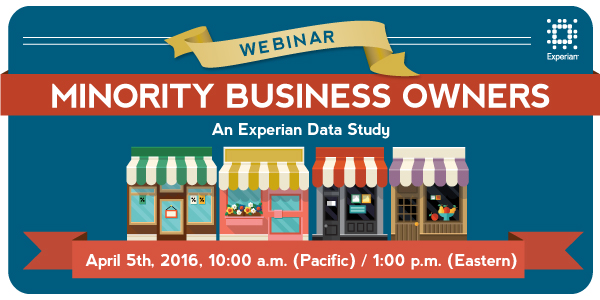
Analysis highlights credit characteristics, industry preferences and demographic attributes of business owners As part of its analytical series on small businesses, Experian®, the leading global information services company, today announced new insights that look at the health of minority-owned small businesses in the U.S.. “Given that minority-owned small businesses make up such a small percentage of the general small business population (approximately 21 percent), industry professionals and regulators are increasingly becoming more interested in helping this segment grow and succeed,” said Pete Bolin, director of consulting and analytics for Experian. “A primary component to accomplish that objective is to educate small business owners on the importance of maintaining a positive credit profile. For example, keeping debt levels low and paying bills in a timely manner can help small business owners better position themselves for growth opportunities.” Findings from the study show that, compared with the overall small business population, minority businesses are slightly behind when ti comes to credit management. For example, the average business credit score* for a minority-owned small business is 49.7, nearly 5 points lower than the general small business population. As a consumer, the average credit score for a minority small business owner is 707, 15 points lower than the overall average of small business owners. In terms of payment behavior, 1.2 percent of minority small business owners had at least one business credit card account severely delinquent (91-plus days), while 8.3 percent had at least one consumer credit card account severely delinquent (90-plus days). Comparatively, 1.1 percent of the general small business owner population had at least one business credit card account severely delinquent, and 6.8 percent had at least one severely delinquent consumer account. Most popular business types Experian’s analysis also identified the most popular industries for minority-owned businesses. The analysis showed that the industry of choice was eating places, which accounted for 7.3 percent of minority-owned businesses, followed by beauty shops (5.8 percent), legal services (2.9 percent), business services (2.7 percent) and real estate (2.5 percent). Regardless of industry, the analysis found that the average consumer income for these business owners was $92,489, which is similar to the general small business owner population which has an average consumer income of $92,338. From an education perspective, 65.6 percent of minority small business owners had at least some college experience, just slightly less than 68.3 percent for the general business population. “Gaining insight into the trends and behaviors of the small-business community is imperative given their importance to the growth and success on our overall economy,” continued Bolin. “While a person’s ethnicity will never be used in a credit decision, understanding the trends of minority-owned small businesses enables credit grantors to help these business owners find the appropriate lending products to expand their establishments and succeed.” Other findings include: Approximately 7 percent of all minority-owned businesses are based out of the home, while more than 10 percent of the general small business population is home-based More than 31 percent of minority business owners are women Nearly 45 percent of all minority-owned small businesses come from three states: California (23.4 percent); Florida (11.4 percent); Texas (10.1 percent) Minority business owners have an average outstanding business balance of $8,759, while the general business owner population has an average outstanding balance of $9,066 Resources for business owners Understanding and monitoring their business credit profile to ensure it is in good standing is a critical step for small-business owners to gain access to financial capital and grow their establishments. With the insights that business credit reports provide, small-business owners can take the appropriate actions necessary to positively impact their business. Experian provides some helpful resources to help small-business owners gauge the health of their business, including: BusinessCreditFacts.com - an authorative source for understanding and learning about the benefits of managing business credit. Visit https://www.businesscreditfacts.com. Experian Business Credit - a site that enables small-business owners to access a copy of their business credit report and helps them understand the impact maintaining a positive credit profile can have on a small business. Visit https://www.experian.com/businesscreditreport. Business Score Planner™ - an educational tool for business owners to understand how financial plans and changes to commercial credit information can impact a business credit score. Visit https://sbcr.experian.com/scoreplanner. Methodology The analysis is based on a statistically relevant sampling of data from Experian’s consumer and business credit database from December 2015. Average scores are an average of the sample, and are not representative of national averages of the consumer or small business. Ethnic background was obtained from Ethnic Technologies, a provider of multicultural marketing data, ethnic identification software and ethnic data appending services.
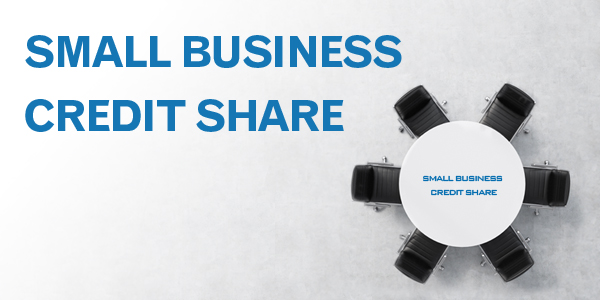
According to the U.S. Small Business Administration (SBA), small businesses account for 99.7 percent of U.S. employer firms and 64 percent of new private-sector jobs. So it stands to reason that the way small businesses go, the economy probably follows suit. One of the biggest challenges for small businesses, however, is the ability to access capital. In order for them to grow, they need money. Many of these smaller firms have limited to no credit history on file. For that reason, it is imperative for lenders and trade creditors to leverage comprehensive data sources (both financial and non-financial), enabling them to make smarter business decisions and help small businesses access credit. It is Experian’s core belief that an open and secure data sharing program is crucial to helping small businesses get the credit they deserve, and it's Small Business Credit Share® program is at the center of this ideal. Small Business Credit Share℠ is a Credit Data Sharing "Club" Small Business Credit Share℠ (SBCS) is a consortium of banks, credit card companies, leasing agencies and other companies that have agreed to provide financial and non-financial data in exchange for exclusive access to data from other contributors. By gaining access to this database, lenders and trade creditors can make more informed decisions, while also promoting financial inclusion and spurring growth within the small business segment. Currently, six of the nation's top ten financial institutions are members, as well as several telecommunications and utilities companies. Small Business Credit Share℠ offers more aggregates (data elements) than any other service of its type. Whereas many lenders rely primarily on summary data (e.g., a credit score and reports of missed payments over the past year), Small Business Credit Share reports include a vast array of detailed credit, financial and non-financial data. As a requirement of membership, members must contribute at least 10 pieces of data on each small business account, such as account types, highest credit utilized, total account balance and payment history profiles. Together, these aggregates provide a much deeper, more meaningful view of a small business than was ever possible when drawing from just a handful of sources. They have also proven to be a far more accurate predictor of credit risk than any other service Membership Provides Benefits to Financial Institutions and Borrowers Alike Small Business Credit Share℠ provides significant benefits to member institutions as well as to the customers they serve. For example, Small Business Credit Share allows members to see the obligations an applicant already has to other lenders. With this knowledge, a lender can make sure an applicant does not become overextended and thus jeopardize their ability to pay back the loans already outstanding. A lender can also generate reports that, when shared with a customer, help ensure that paying back that lender becomes a priority so as to strengthen their credit score. Small Business Credit Share can also help members achieve SBA compliance, as the SBA mandates reporting to "bureaus" for all SBA-backed loans (SOP 50 57). To Get More, Give More As in life, what you can get out of the Small Business Credit Share℠ tends to be directly proportional to what you put into it. The more data members share, the clearer the picture of their small business borrowers becomes, and the smarter credit decisions they are able to make. Watch our Small Business Credit Share Program Overview Video We're encouraged by the overwhelmingly positive reception the Small Business Credit Share has received from the financial industry as a whole and from our member companies in particular. We remain committed to the idea that financial inclusion provides a strong value proposition to the Financial Services community, and believe Small Business Credit Share aligns with that ideal. Small Business Credit Share

Businesses are faced with the need to collect on delinquent accounts. When pursuing these past-due accounts, the most successful way to approach them is with a combination of perseverance, politeness, and professionalism. This serves the dual purpose of increasing the likelihood of receiving a prompt payment and also staying within the guidelines set forth by the Fair Debt Collections Practices Act. Perseverance While constantly calling a customer for payment can be a drag, perseverance will pay off—literally. Keep notes when calling the customer, detailing when you called, the time you called and if the customer promised payment. If payment was promised, make a note of when. Most software will have note-taking capabilities, so use that to keep track of whether the customer is following through with payments or not. Aim to call once a week to keep your company in the forefront of the customer's payable person. Politeness Being polite can be trying when the customer is being evasive about payment status. Remember the old adage of catching more flies with honey than vinegar. Being polite gives the customer less reason to avoid payment. Share a story or joke with them. Get familiar with the person doing the payments for your business. Avoid negative outbursts containing vulgar language or calling multiple times per day, which are both violations of FDCPA code. Professional Above all, remain professional. Do not allow emotion or personal feelings about the customer cloud your attitude. This is strictly business, and the customer who may be slow or evading payment would do the same to anyone else in your position. Talk to them about payment plans if they are having a hard time paying. If they are hesitant to pay, ask for the reason why. Is there an issue with the product or service your company offers? If there is a problem with the product, talk to product/servicesupport staff to see if they are aware of this issue. If they are, ask them to contact the client with the solution. Sometimes it is necessary to involve sales representatives while collecting. The sales rep can go in and play "Good Cop," letting the customer know that they would love to sell them more product or further service, but that there's a problem with the account that needs to be resolved with the customer's accounts payable department. This normally results in the procurement associate contacting the accounts payable department and asking why payment has not been made on the prior purchase. Thisfacilitate payment, and in turn, increase company cash flow. Using these techniques will reflect respect and courtesy, which in turn elicits goodwill with the customer. Business Chat | LIVE - Credit & Collections with Katie Keitch We had a great interview about best practices in B2B Collection with Katie Keich. Katie is the V.P. of Commercial Services at InsideARM. She shares how to drive a successful collections strategy in your credit department or through 3rd party collections. Learn more about InsideARM
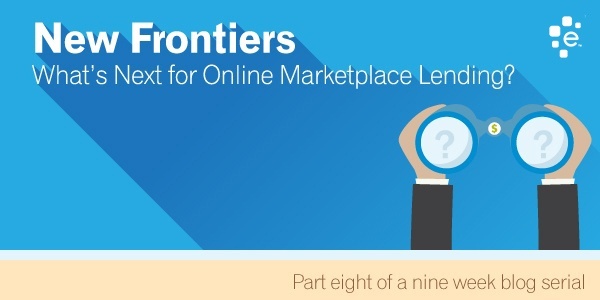
Simply put, online marketplace lending is here to stay. Virtually unheard of just 10 years ago, Web-based companies that offer funding options beyond traditional bank loans have grown considerably. Small businesses — drawn by the easy application process and flexible repayment terms, have become increasingly comfortable working with online lenders, which offer rapid access to capital, a wide array of niche products, and a low-friction customer experience. The lack of regulation and higher-than-market interest rates that often accompany these “alternative” loans have not deterred borrowers from trying this new source of business financing. Despite their growth, however, online lenders still make up only a small segment of the overall small-business loan market. While that paints a clear picture of the current online marketplace lending environment, what does the future hold? How is the industry, still in its infancy, likely to change as it responds to pressures from competitors, borrowers and regulators? Here are some trends we can expect to see over the next several years: Growth — As online lending becomes more mainstream, look for the industry to expand exponentially. In 2014, online lenders combined to issue loans totaling about $12 billion in the United States. In a recent report, Morgan Stanley said it expects the U.S. number to grow to $122 billion by 2020 and the global number to surpass $280 billion in the same time period. "Online marketplace lenders are still very small players relative to the overall market, but they’re growing fast. They could be very disruptive or an entirely new [source] of capital for both small businesses and consumers that aren’t necessarily serviced by larger banks.” James Francis Executive Vice President, Consumer Lending Group MUFG Union Bank N.A Participation — Exponential growth likely will be fueled by the growing acceptance of online lending by small businesses, especially those run by millennials comfortable with virtual transactions. As the customer base grows, look for competition to increase as both new and established lenders fight for the attention of this attractive market segment. "Small-business owners in general are increasingly turning to online options to seek capital. According to a recent study by the Fed, 20 percent of small-business owners sought a business loan online during the first half of 2014. Small businesses are using new technologies to manage their customers, process payments, handle point-of-sale — it makes sense they’d turn online for capital as well.” James Hobson Chief Operating Officer OnDeck Innovation — New, even more, efficient ways for borrowers to secure business loans — not to mention the nature of the financial products themselves — will continue to appear as competition drives innovation. Look for lenders to develop: Faster, more user-friendly interfaces along with algorithms that further accelerate the review and approval process Frictionless access Improved customer engagement and experience Platform and product innovation "Certainly there are more players in the space today, which is great because it pushes not only us but the category as a whole to generate more awareness, more credibility and better platforms to help small businesses. The category as a whole has been built on this idea of making things a little bit more simple and easy. We’re always asking, ‘How can we provide our offerings in a frictionless way and time-sensitive manner?” Jason Rockman Vice President, Brand Marketing CAN Capital "There are a lot of lenders offering similar products to the same customers. There will be more competition to offer more products, which is better for borrowers.” Meredith Wood Editor-in-Chief Fundera Consolidation — Industries often go through a period of hyper expansion followed by a period of consolidation as larger, better-financed players acquire smaller competitors and underperformers go out of business. One hundred years ago, more than 100 companies were making automobiles in the United States alone. Today, there are fewer than a half dozen. Twenty-five years ago, scores of companies were making personal computers. Today, a handful of brands dominate 90 percent of the market. We can expect the online marketplace lending sector to experience similar consolidation. Spillover — As online lending becomes increasingly mainstream, look for traditional lenders — particularly commercial banks — to enter the fray. Some forward-looking banks already are working directly with online marketplace lenders, referring customers based on their needs and qualifications or re-creating the frictionless look and feel of online lenders. Look for the dramatic differences between “traditional” and “alternative” lenders to blur in the coming years. "There are several key reasons why banks would want to partner with online lenders. The first is to drive customer retention. A bank says yes to small-business borrowers roughly 20 percent of the time based on their lending criteria. What happens to the other 80 percent? Banks don’t want to lose those customers. Partnering with marketplace lenders is one way to retain those customers and create a good user experience. “Customer loyalty is another driver. Access to capital does more to build loyalty than any other product or service. Finally, the biggest motivator is access to new technology and data, especially for institutions forward-thinking enough to recognize that there are opportunities for them to monetize their existing data as well as learn from the data analysis and data science that some of the more sophisticated marketplace players are executing.” Glenn Goldman CEO, Credibly Regulation — Regulation is on the horizon for the online lending industry. While the absence of regulation has facilitated rapid growth and innovation, this lack of oversight also has led to an environment in which some borrowers have complained of unfair lending practices and a lack of transparency. Most leading online lenders believe some kind of regulation is good for the industry. A set of rules and standards defines the playing field and provides the confidence and consistency the industry needs to grow sustainably. “Some government oversight is going to happen. It’s just a matter of time,” said Levi King, Founder and CEO of Nav (formerly Creditera), which was founded in 2012. “Small businesses are not sophisticated. There’s a lot of predatory lending extended to small-business owners, who are, as a rule, not sophisticated enough to know what’s happening.” “We believe it’s important to foster greater transparency in business lending marketing,” said Rebecca Shapiro, Director, Brand & Strategy, Funding Circle. Along with Fundera, Lending Club, Opportunity Fund and Accion, Funding Circle recently helped craft the Online Borrowers Bill of Rights, which attempts to establish ethical standards the industry can use to police itself. “We don’t assume the bill can replace government regulations. We do believe that, by encouraging responsible regulations, we’ll have a model for what the government should do,” said Shapiro. The Future Is Bright Customer engagement, access, frictionless applications, and a wide range of product choices are at the heart of the online marketplace lending industry. The mainstream banking industry is starting to take note, looking externally at possibilities for collaboration and internally at ways of updating systems and processes to improve the customer experience. Ethical standards and regulations will increase transparency, accountability, and consistency. If these trends continue, both the small-business owner and the economy will reap the benefits. The State of Marketplace Lending In 2008, a short two years after the first online marketplace lenders opened for business, the Great Recession began to wreak havoc on worldwide financial markets. Small businesses struggled to survive, banks failed and access to capital was limited. More online lenders saw an opportunity and opend for business. These technology-driven newcomers hired an army of data scientists, coders and digital marketers. In the fall of 2015 the innovation, industry disruption and regulatory uncertainty that characterize this dynamic sector led Experian to produce a series of articles focusing on different aspects of online marketplace lending. This report contains those articles. Download eBook Related articles Just how alternative are today’s online marketplace lenders? How online marketplace lenders are changing the rules of small-business finance Self-Regulatory Program for Nonbank Small Business Lenders Top regulatory priorities for commercial lenders Playing to Your Strength - Opportunities for Regional Banks to Build Better Lending Portfolios Game Changer - How Marketplace Platforms Are Bringing Financial Institutions Back to Small-Business Lending Marketplace Matchmakers - How Loan Aggregators Bring Borrowers and Lenders Together New Frontiers - What's Next For Marketplace Lending?
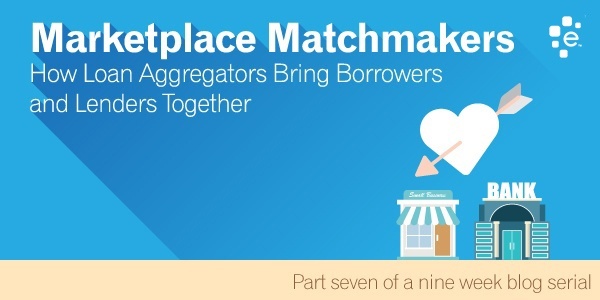
Marketplace lending has become a dynamic source of small-business financing. In 2013, marketplace lenders funded customers to the tune of about $3 billion, twice the volume from the previous year. These numbers are expected to continue to rise steeply throughout the rest of the decade as customers become increasingly comfortable with the concept. Operating almost exclusively via the Internet, thesefintech companies can be particularly helpful to newer, less-established retailers, such as restaurants and B2B service companies that don’t have the documented track record that most traditional banks prefer. These alternate financing sources also can be an excellent resource for smaller loans in the $5,000 to $200,000 range. Larger banks often are reluctant to consider smaller business loans. Business owners looking for quick access to capital have a wide variety of sources to choose from: Nonprofit lenders Invoice financing Online business loans Loan aggregators Peer-to-peer financing Crowdfunding But how can potential borrowers locate these new lenders? When it comes to matching small-business borrowers to the most appropriate lenders, a new breed of marketplace matchmaker or loan aggregator is finding success bringing the two parties together. Aggregators compare the needs and qualifications of borrowers with lenders in their network matching their target criteria. Think of it as speed dating for business financing. Organic Online Searches Not surprisingly, many online lenders rely on technology to find potential customers. Common online marketing tactics include pay per click and search engine optimization (SEO). “Most of our customers come from the Internet itself,” confirmed Meredith Wood, Editor in Chief of Fundera, an aggregator for about 30 individual marketplace lenders. Founded in early 2014, Fundera has helped more than 1,200 small businesses acquire loans totaling more than $60 million this year. “We do paid acquisition and also use content to generate organic searches. We rank well for competitive terms like ‘business loans.’” Nav (formerly Creditera), founded in 2012, is another successful fintech company, offering an array of commercial financial services, including credit cards, credit card processing and small-business loans. Like Fundera, Nav relies on SEO for many of its leads. “Of all the lead channels we have, SEO organic is the most difficult to get going,” said Levi King, Founder and CEO of Nav. “You’re competing for attention with millions of other people. But while it’s the slowest channel, it also tends to yield leads of super high quality. The people who find us organically are looking for what we offer.” Social Media Social media is one tool being used more frequently in Web-based marketing. Using advanced algorithms, marketplace lenders can target ads directly at businesses that fit a specific profile. “We use Facebook, Twitter, LinkedIn — anywhere small businesses are showing up and you can target them effectively,” King explained. “Small-business owners behave a lot like consumers. Their business and personal communications are almost identical. While social media is a great way to connect with this market, it’s definitely not the way you’d market to enterprises.” Referrals Referrals are another significant and valuable source of customer leads and tend to come from one of two principal sources: Other funding sources — Often, a lender, such as a bank, that is unable or unwilling to write a loan for a small business will refer that business to an alternative lender with more flexible requirements. Banks generally refer customers only to companies they have worked with before and have established credibility in terms of reputation, integrity and professionalism. Lenders that make referrals under these circumstances usually do so as a courtesy and receive no fee or other consideration for their efforts. Their intent is to cultivate good relationships with customers who may someday migrate to more traditional banking services. Satisfied customers — Perhaps the most valuable referrals are those that come from other business owners who already have received loans from a particular marketplace lender. Getting referrals from friends, relatives and business acquaintances sets a customer’s mind at ease and helps the customer overcome the hesitation and anxiety sometimes associated with dealing with a new company. Partnerships and Aggregators Many marketplace lenders have developed formal partnerships with companies or with other lenders that provide them with customer referrals. Unlike the casual referrals discussed above, these often involve fees or other consideration as part of a contracted business arrangement. For example, Fundera works with FTD® to help their florists find financing. “Borrowers complete one aggregated application that we send off to various lenders,” said Wood. “We present the offers we receive to the borrowers and work through them together so they understand what each offer means, what they really cost, etc.” The Future of Online Lending Not surprisingly, both Wood and King are bullish on the future of marketplace lending. Wood in particular sees the option as being very attractive to young people who have some experience in the business world and now are ready to start companies of their own. The online marketplace lending industry is growing by leaps and bounds. Fintech companies continue to rapidly innovate, developing niche products and efficient data-driven marketing approaches. At the same time, the banking sector remains the dominant source of funding for small businesses, with close community ties and deep customer relationships. Fintechs and banks are beginning to explore ways to work together to make the most of what each brings to the small-business funding market. Regulators are engaging with the online marketplace lending industry and considering factors related to disclosure, transparency and lending practices. The outcome for small businesses is increased choice, information and access. That is good news for them and for the economy. The State of Marketplace Lending In 2008, a short two years after the first online marketplace lenders opened for business, the Great Recession began to wreak havoc on worldwide financial markets. Small businesses struggled to survive, banks failed and access to capital was limited. More online lenders saw an opportunity and opend for business. These technology-driven newcomers hired an army of data scientists, coders and digital marketers. In the fall of 2015 the innovation, industry disruption and regulatory uncertainty that characterize this dynamic sector led Experian to produce a series of articles focusing on different aspects of online marketplace lending. This report contains those articles. Download eBook Related articles Just how alternative are today’s online marketplace lenders? How online marketplace lenders are changing the rules of small-business finance Self-Regulatory Program for Nonbank Small Business Lenders Top regulatory priorities for commercial lenders Playing to Your Strength - Opportunities for Regional Banks to Build Better Lending Portfolios Game Changer - How Marketplace Platforms Are Bringing Financial Institutions Back to Small-Business Lending Marketplace Matchmakers - How Loan Aggregators Bring Borrowers and Lenders Together New Frontiers - What's Next For Marketplace Lending?
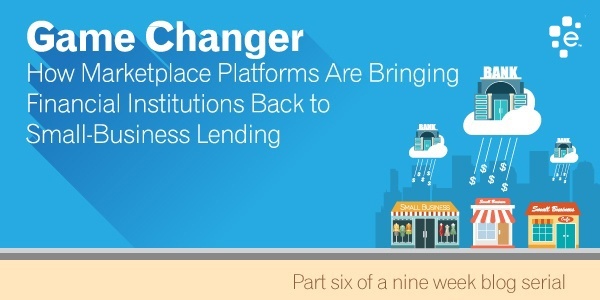
In the wake of the Great Recession, numerous entrepreneurs began to use online lending platforms to offer capital funding programs, short-term loans and other business-to-business (B2B) credit plans to small-business owners who were otherwise unable to do business with traditional banks. Today, much has changed, and "marketplace lending" has grown with loans coming in a wide variety of types, sizes, lengths and terms. The characteristics marketplace lenders tend to share include: An easy application process facilitated by Web-based platforms Fast approvals, often within 24–48 hours Higher-than-normal Annual Percentage Rates to compensate for the market’s higher risks The absence of state or federal regulation The borrowers also share similar characteristics: They are often small, relatively young companies (between one and five years in business) Many are retailers, such as stores and restaurants, or B2B service companies, such as marketing and advertising agencies They have strong cash flow As an industry, marketplace lending has enjoyed considerable success over the past five years. In some entrepreneurial circles, names such as Lending Club, Fundera, Creditera and Funding Circle are as well-known as Citibank, Bank of America and Wells Fargo. According to a recent report from Morgan Stanley, in 2014 marketplace lenders issued a combined $12 billion in loans in the United States and more than $24 billion worldwide. Morgan Stanley expects that activity to grow to $122 billion and $280 billion, respectively, by 2020. Granted, such numbers are modest compared to the $15 trillion controlled by the total U.S. financial sector, but the market is large, fast-growing and has gained the attention of many “traditional” financial institutions. Many full-service banks see these newer online platforms as opportunities to increase their own efficiencies as well as a way to capture future long-term customers. Union Bank Partners With Lending Club to Expand Opportunities MUFG Union Bank N.A, a large financial institution that operates 398 full-service branches throughout California, Oregon and Washington, recently partnered with Lending Club, the San Francisco–based peer-to-peer lending company founded in 2006. “Our relationship started as an investment,” said Donald Stroup, Chief Credit Officer for MUFG Union Bank N.A. Retail Banking group. “We have not been in the credit card business for many years and have had no exposure in auto finance or student lending. Lending Club offered us an opportunity for diversification, for expanding our banking services and for products that could help us broaden our household penetration.” James Francis, Executive Vice President for MUFG Union Bank, N.A. Consumer Lending Group, also noted, “Online lenders are still very small players relative to the overall market, but they're growing fast. Banks have a great deal of flexibility when it comes to working with marketplace lenders. Investors, such as banks, can pick and choose where they want to play; for example, we decided to purchase high-end consumer paper from Lending Club. Because it operates throughout the United States, we can purchase from Texas and New York, and not just the West Coast. Lending Club is very transparent with its criteria, so we know where the loans originate.” Both Francis and Stroup believe that full-service banks can learn from marketplace lenders when it comes to speed, convenience and electronic applications. This is particularly true when it comes to working with millennials, many of whom are far more comfortable with the online environment than they are with brick-and-mortar establishments. “Businesses may begin by shopping for cheap loans online, but once a business reaches a certain size and complexity, it looks to one provider to handle all its needs,” Francis added. “In addition to simple capital lending, this can include cash management, investments, liquidity, stock ownership plans, estate planning, etc. Online marketplace lending companies can't provide that broad array of services and relationships. It takes a traditional bank to do that.” While acknowledging the success marketplace lenders have had connecting with a segment of the market that for a time was underserved, Francis remains concerned about its resilience and longevity. “This is still a largely untested business model," he noted. “Having been born out of the Great Recession, marketplace lending hasn’t gone through a complete business cycle. It will be interesting to see how these lenders perform in a down cycle. I suspect that, in a down market, these lenders will have a harder time funding loans. Investors may get skittish when they see the lower returns that will inevitably occur.” Despite their concerns, both Stroup and Francis remain open to exploring further opportunities in marketplace lending. MUFG Union Bank N.A. is just one of many large financial institutions now exploring partnerships with online lending concerns. We expect these alliances to become increasingly common over the next two to three years, with new synergies creating more markets and opportunities, for borrowers and lenders alike. Related articles Just how alternative are today’s online marketplace lenders? How online marketplace lenders are changing the rules of small-business finance Self-Regulatory Program for Nonbank Small Business Lenders Top regulatory priorities for commercial lenders Playing to Your Strength - Opportunities for Regional Banks to Build Better Lending Portfolios Game Changer - How Marketplace Platforms Are Bringing Financial Institutions Back to Small-Business Lending Marketplace Matchmakers - How Loan Aggregators Bring Borrowers and Lenders Together New Frontiers - What's Next For Marketplace Lending?
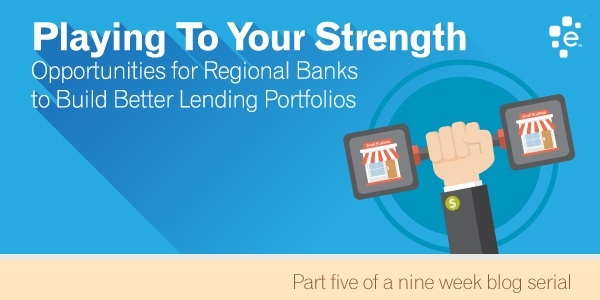
This week, we invited Charles H. Green to offer his perspectives on the online marketplace lending sector. Charles is Managing Director of Small Business Finance Institute, which provides professional training to commercial lenders for banks and nonbanks. He has written extensively about the marketplace lending sector, including the recent Banker’s Guide to New Small Business Finance (John Wiley & Sons, 2014). Earlier in his career, he founded and served as President/CEO of Sunrise Bank of Atlanta. The evolution of commercial lending over the past seven years has certainly had its share of ups and downs. Remember the ominous days leading up to the financial crisis when it seemed like everything was teetering on collapse? In the end, and more than five hundred bank failures later, the economy found a very slow path back to growth. During that uncertain time, commercial lenders took a lot of criticism from several directions. Regulators were skeptical of the risk level that lenders accepted, borrowers argued when their credit score did not qualify them for a loan and seemingly everyone else had an opinion on how long it took to turn lending volumes around. On top of those worries, a new channel emerged, “online marketplace lending.” These new lenders funded loans from technology platforms that turned around loan applications in very short order, seeming to best banks at their own game. Fast forward several years, and traditional lending has had plenty to cheer about, even if not recognized in the broader economy. The bank failures largely have been resolved, making some of the healthy surviving banks much larger and eliminating some competitors in many markets. Additionally, bank profits are back up as balance sheets have been mostly cleared of underperforming credits, with a renewed focus on good underwriting and solid risk management. Banks Have Advantages This new phenomenon known as online marketplace lending has grown dramatically on the strength of loans that traditional banks have had difficulty serving in the past: small, unsecured working capital loans to service and retail businesses. By performing the sorely needed task of scaling smaller business loans, online marketplace lenders have strengthened many small companies that were otherwise unable to secure financing from banks. However, banks never lost their core strength: their customers. While deregulation gave rise to competitors from a long list of bank services and products, few small-business owners left their banks behind entirely. During the crisis, many companies flocked back to the safety of the federally insured deposit system. Online marketplace lenders may augment but never replace those kinds of relationships. Another advantage large banks have is a strong tie with local businesses. While online lenders can respond quickly to application requests with the latest digital efficiency, their capacity to forge direct relationships is often limited to the term of their outstanding loan. Once repaid, they must restart the cycle to convince clients to borrow again. Banks, on the other hand, offer dozens of products and services that can help small business owners manage everything from business finances, household purchases, retirement savings, auto loans, safe deposit boxes, etc. Most online lenders offer a shorter product list, with options intended to serve a specific customer demographic. Perhaps the most significant advantage banks carry is their degree of flexibility. While online marketplace lenders can leverage the many benefits of a digital platform, there is often only one way to apply for a loan. Many online lenders lose business when an applicant falls outside their parameters. Finally, banks offer flexibility to negotiate around certain conditions or requirements that may bear consideration of alteration. There are people at various levels who can waive some rules or make exceptions when warranted. Given their similarities (looking for business among the same customer prospects) and differences (average loan size, structure and underwriting), banks and online marketplace lenders have the perfect opportunity to forge cooperative arrangements to exchange business. Imagine there is a bank president with a 50 percent loan-to-deposit ratio who is starved for a larger book of earning assets. Perhaps he needs assets from some areas that came up weak in his Community Reinvestment Act (CRA) examination? Maybe his loan product mix is too heavily reliant on big Commercial Real Estate (CRE) loans, but he struggles to book small credits profitably due to the boarding cost? What if he could go to a trusted online marketplace dashboard and search for loans to buy based on a transparent credit grading matrix, with adequate returns commensurate with the risk? Maybe he could even target specific ZIP™ codes to invest funds in places he is lacking market presence. Small-business loans, consumer loans, student loans — they’re all there, and more lines are on the way. Online lenders are nonbank entities that finance much in the same way as banks. A considerable portion of their capital must be invested in their proprietary digital capacity, so when lending grows, many are scrambling for funding. Most of them fund this volume with either revolving lines of credit, securitization or by selling off loans/portfolios to investors. The interesting part is that nothing should stop a commercial bank from participating in any of these activities. There are plenty of opportunities for banks to engage with the marketplace for profitable results with manageable risk. Banks can buy portfolios or loans, refer loan applicants, use the online lender’s proprietary technology to underwrite and fund certain loans, or participate with lender finance, which has been a common practice for alternative lenders for decades. Each type of financial institution has its own inherent advantages. However, playing to the strengths of the online marketplace and banks alike enables both types of entities to open new pockets of opportunity — a situation that may lead to a faster path for economic growth. Related articles Just how alternative are today’s online marketplace lenders? How online marketplace lenders are changing the rules of small-business finance Self-Regulatory Program for Nonbank Small Business Lenders Top regulatory priorities for commercial lenders Playing to Your Strength - Opportunities for Regional Banks to Build Better Lending Portfolios Game Changer - How Marketplace Platforms Are Bringing Financial Institutions Back to Small-Business Lending Marketplace Matchmakers - How Loan Aggregators Bring Borrowers and Lenders Together New Frontiers - What's Next For Marketplace Lending?
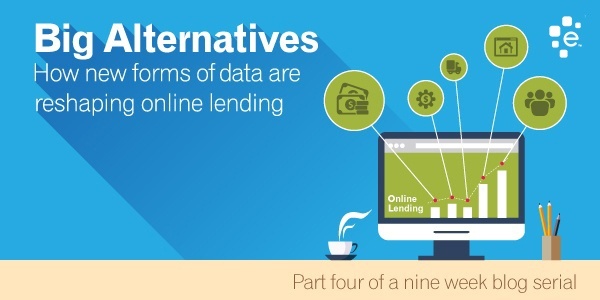
Online lenders represent a valuable resource for small businesses in need of working capital. Also known as "alternative" lenders, they are particularly useful to new businesses lacking the long, detailed credit history that banks and traditional lenders usually require to underwrite a commercial loan. This is why online lenders have become so popular with newer restaurants, small retailers, young business service companies and other enterprises that have no other place to go for working capital. Being unregulated, online lenders can be far more lenient with their lending requirements. However, online lenders don’t lend blindly. They don’t base their decisions on a catchy name and an inspiring mission statement. Online lenders have numerous sources of data upon which to base their decisions; as you might imagine, many of these sources are as "non-traditional" as the lenders themselves. For example, there are many names people use to describe the new types of data online lenders use to qualify applicants, such as “Big Data,” “alternative data” and “online data.” Essentially, they all mean the same thing: Readily available information that can be used to determine a business' financial health above and beyond traditional credit scores. New Data Sources for Online Lenders In addition to checking accounts and tax returns, online lenders may use any number of alternative sources of data to evaluate potential borrowers, including: Social Media. What customers say about a business on various social sites offer more important clues as to a business' health. A business with high ratings from a large number of customers may be a good risk, even if it's only been in business for one or two years. Online Financial Activity. Heavy activity on sites like PayPal or Ebay can suggest a healthy cash flow, something that's important to many online lenders. Permissioned access to business checking account information also allows lenders to better assess cash flow. Accounting Software. Having direct access to a borrower's accounting software (e.g. QuickBooks, FreshBooks) allows a potential lender to observe and track a borrower's financial activity in real time. Such data can also provide a lender with an early warning signal should the borrower suddenly get into trouble. Shipping Data. If a borrower is a retailer, whether B2B or B2C, are its products moving? Shipping data -- both volume and frequency -- is another valuable indicator of financial stability. Privacy & Security Issues How do online lenders capture this data, particularly the proprietary information not readily available through a Google search or social media? They get it straight from the borrower. When a business owner agrees to an online loan, they're often agreeing to provide the lender direct access to their business checking, accounting and management system. And sometimes not just for a one-time look, either. This may involve long-term access so the lender can keep an eye on its investment. The downside to this arrangement is, of course, privacy and security vulnerabilities. The upside is that it may help expedite future borrowing. Interpretation is Critical Of course, data by itself does not tell the whole story; it must be properly interpreted. This is particularly true of alternative data. For example, the ratings a restaurant receives on social media can't be judged against ratings for a dry cleaner. A restaurant in any city is likely to get far more social media coverage than is a neighborhood dry cleaner. However, a dry cleaner with just two or three reviews may be a far better business risk than a restaurant with 10. It's all about being able to interpret, normalize and glean insights from the data you collect. Packaging Online Data for Risk Assessment Five years ago, Experian created its Global Data Laboratory in San Diego for the express purpose of mining alternative data and seeing if it could be packaged as a commercial product to help online lenders and other companies evaluate new, small companies. Staffed with a team of Ph.D.’s in data science, the lab has built a one thousand (1,000) terabyte database containing information from thousands of sources. "One of the big challenges any lender faces is determining if a borrower is legitimate. This is true even for traditional businesses, like a Home Depot that may want to open a credit line with a small contractor that has little or no credit history. For every 100 companies that are 'invisible' to lenders, we can now establish the legitimacy of 20 businesses using nothing but online sources. That means a business can now have as much as 20 percent more customers than before just by accessing this alternative data. The lab's new algorithms are also highly predictive of a company's longevity.” Eric Haller EVP Experian Data Labs For new and emerging businesses, leveraging data from the Web can deliver a 40 percent lift in predictive performance compared to the industry averages for predicting whether a company will go out of business or not. Just Part of the Equation As useful as alternative data is, it’s just part of the algorithm an online lender uses to score borrowers. Traditional credit scores are usually still part of the evaluation process. When available, nothing predicts credit risk better than credit history. Even the most sophisticated online lenders are still going to look at trade experience, business registrations and other third-party information. Alternative data sources become just one part of the equation. New sources of customer information and readily available online data, combined with traditional data and metrics – and the experience necessary to properly interpret both – has created a robust online financial marketplace and gives small business owners unparalleled access, flexibility and choice when it comes to capital financing. While it's still a bit like the Wild West, the world of online lending continues to grow robustly. Through the use of Big Data, Experian is able to provide insights that help minimize risks for borrowers and lenders alike. That helps everyone. Related articles Just how alternative are today’s online marketplace lenders? How online marketplace lenders are changing the rules of small-business finance Self-Regulatory Program for Nonbank Small Business Lenders Top regulatory priorities for commercial lenders Playing to Your Strength - Opportunities for Regional Banks to Build Better Lending Portfolios Game Changer - How Marketplace Platforms Are Bringing Financial Institutions Back to Small-Business Lending Marketplace Matchmakers - How Loan Aggregators Bring Borrowers and Lenders Together New Frontiers - What's Next For Marketplace Lending?
